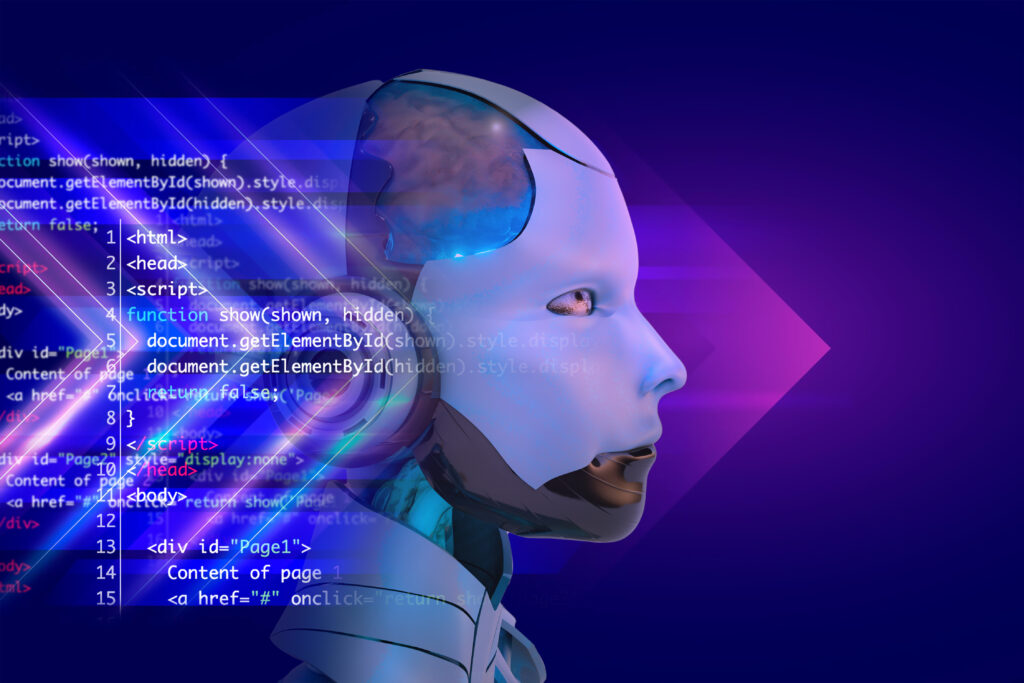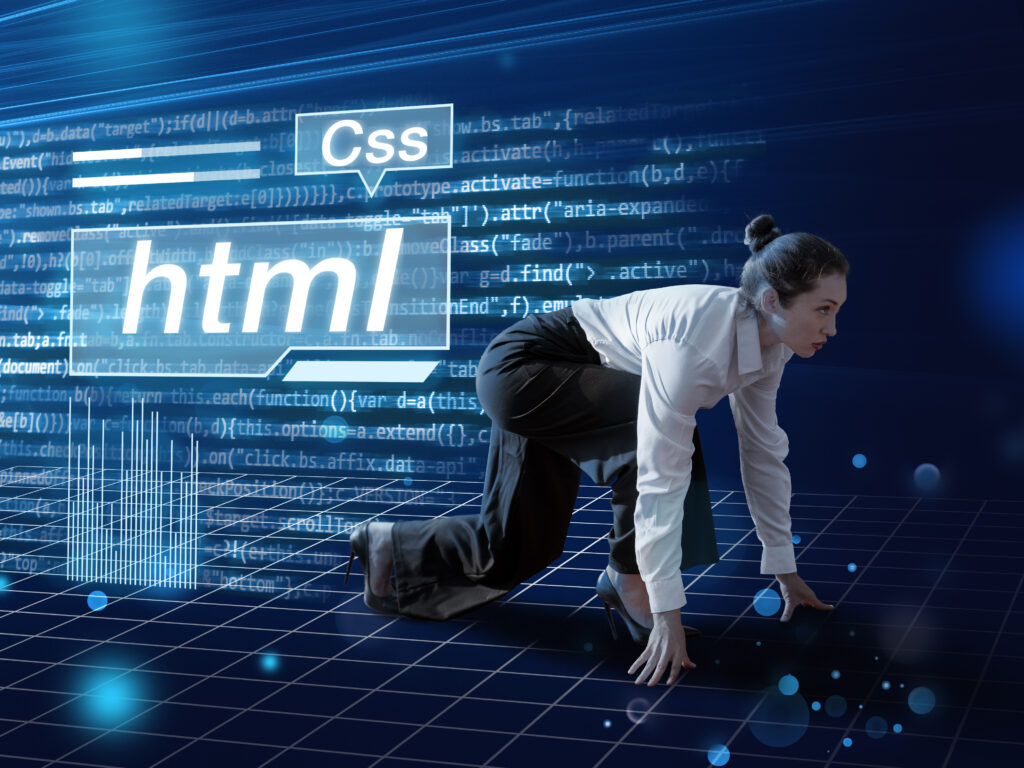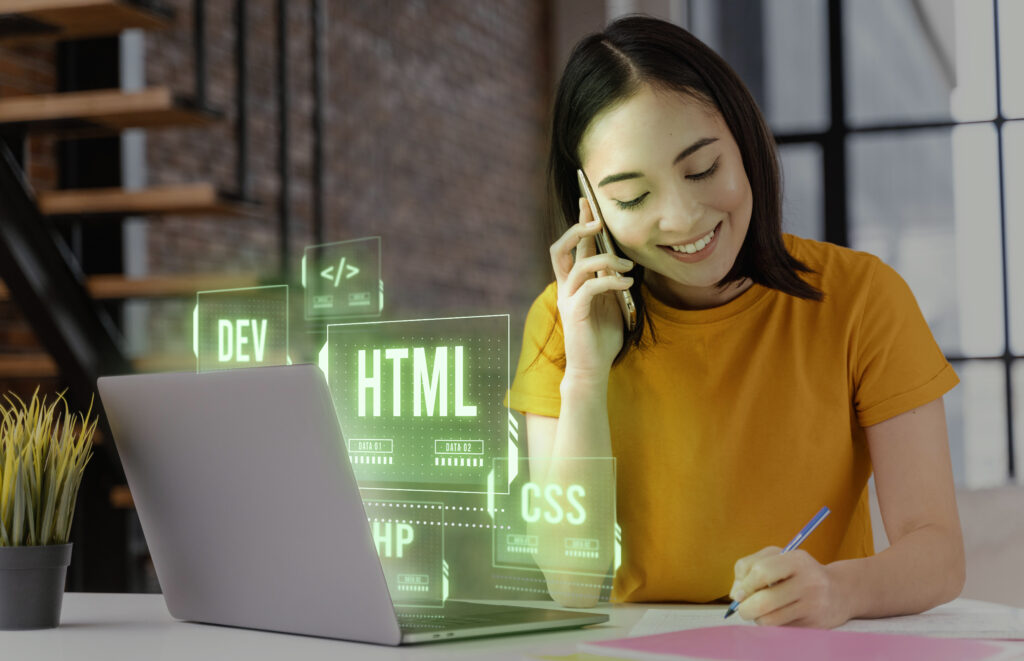Open-Source Wonders: Neural Network Art
In a world where technology and creativity merge, open-source neural network art creators have become key players. These tools, like StableStudio, DALL-E mini, DeepFloyd IF, Openjourney, and Waifu Diffusion, allow anyone from professional artists to casual enthusiasts to unleash their creative potential. Each platform offers something unique, from turning words into pictures to crafting detailed digital images. This variety enriches the artistic landscape, providing endless possibilities for exploration.
These art generators are not just about making pictures; they reshape how we think about art and AI. With features like StableStudio’s easy setup or DALL-E mini’s ability to transform text into visuals, they open up new avenues for expression. This innovation is exciting because it shows how far we’ve come in integrating technology into creative processes. It also sparks curiosity about what’s next for the world of art and artificial intelligence.
Key Takeaways
The emergence of open-source neural network art tools reshapes the intersection of technology and creativity. Tools like StableStudio, DALL-E Mini, DeepFloyd IF, Openjourney, and Waifu Diffusion showcase diverse methods for artistic creation, highlighting how AI enhances our creative potential. Here are three key takeaways:
- Innovative art is now more accessible.
- Creativity meets computing for new art forms.
- These tools highlight the future of artistic expression.
Each platform offers a unique way to merge human creativity with machine efficiency, enabling once-impossible art creation. This movement broadens the scope of what we can imagine and democratizes the art creation process, making it accessible to more people.
Exploring StableStudio
StableStudio is a groundbreaking open-source AI art generator. It uses advanced models like SDXL and Stable Diffusion, giving users much freedom and options for making art. This tool builds on the success of DreamStudio, which was known for its powerful AI art features. StableStudio takes things further by allowing artists and developers to create distinctive, high-quality artwork. This is a big step forward for those interested in digital art creation.
What makes StableStudio unique is its combination of leading-edge technology and its open-source approach under the MIT License. This means anyone can access and modify the platform, encouraging a community-driven approach to improving and innovating the tool. Users can also install it locally, which offers even more control. Whether you’re just starting or a seasoned creator, StableStudio is a versatile tool for exploring the endless possibilities of AI-generated art.
In the fast-paced world of AI art, StableStudio stands out because it is committed to being open-source and using powerful AI models. This makes it an excellent resource for creating unique artwork, marking a new era in digital creativity.
DALL-E Mini Overview

Switching focus to DALL-E Mini, it’s essential to understand how it works and its impact on digital art. This AI art model excels at turning words into pictures, offering various artistic possibilities. It uses complex technology to turn text descriptions into images, opening new creative avenues.
This tool is valuable for artists and creators looking for new ways to express ideas visually. DALL-E Mini’s ability to generate unique images from textual prompts makes it a useful tool in art. It shows how technology and creativity can unite to push the boundaries of what’s possible in digital art.
How DALL-E Mini Works
DALL-E Mini is a cutting-edge AI tool that turns text into images. OpenAI developed this art model and uses neural networks to create unique and detailed digital art from written descriptions.
- AI Framework: It uses a state-of-the-art AI model for turning words into pictures.
- Text Inputs: You can type in any description, and it will create an image from it.
- Visual Outputs: It’s excellent at making images that are both detailed and look natural.
- Versatility: It can make all kinds of digital art, depending on what you ask for in the text.
This fantastic technology can take what you imagine in words and turn it into visual art. This makes it a key player in the world of AI-created images.
Creative Applications Explored
Exploring how DALL-E Mini turns text into visual art shows its skill in making ideas you can see. This AI tool changes written details into pictures and drawings. It’s like having a magic brush that paints what you describe. DALL-E Mini works under the Apache License 2.0, making it easy for anyone to use. You can try it on the Hugging Face website, where it’s free to mess around and see what you can create.
Turning words into images, DALL-E Mini stands out in the world of AI creativity. It’s perfect for making art or designing things based on your ideas. This tool shows how AI changes our creation, offering endless possibilities for new and exciting visual content.
DeepFloyd IF Features

DeepFloyd IF stands out in AI-driven art creation using cutting-edge cascaded pixel diffusion models. This technology allows it to turn simple text prompts into visually stunning images. It’s known for its ability to take complex ideas from text and turn them into detailed, high-quality visuals.
Key Features of DeepFloyd IF include:
- Advanced Cascaded Pixel Diffusion Models: DeepFloyd IF leverages top-tier neural networks to craft detailed and complex images. This technology sets DeepFloyd IF apart in the AI art scene.
- Enhanced Image Quality: Combining several neural networks and super-resolution models, DeepFloyd IF ensures the images it produces are crisp and clear.
- Try it on Hugging Face: For those interested in seeing what DeepFloyd IF can do, there’s a demo available on Hugging Face. This gives everyone a chance to experience the technology firsthand.
- User Rights and Ethical Use: The DeepFloyd IF License Agreement ensures the technology is used responsibly. It outlines what users can and cannot do, promoting a safe and ethical environment for creativity.
These features solidify DeepFloyd IF’s place as a top choice for transforming text into detailed images.
Introduction to Openjourney

After exploring DeepFloyd IF, we now turn our attention to Openjourney. This standout project makes creating art with AI accessible to everyone. It’s built on the Stable Diffusion model and is known for producing high-quality images from simple text descriptions. Thanks to its MIT License, Openjourney is free to use, making it a go-to for artists and creators looking for a cost-effective way to bring their visions to life.
Openjourney stands out because it simplifies the process of turning text into images. Whether you’re a professional artist or just starting, this tool opens up a world of creative possibilities without the steep learning curve. Its use of the Stable Diffusion model ensures that the images are unique and of excellent quality, which is crucial for anyone looking to stand out in the visual world.
Exploring Openjourney Basics
Exploring the basics of Openjourney reveals this open-source AI tool’s capability to turn text descriptions into visual masterpieces using Stable Diffusion technology.
Openjourney uses the Stable Diffusion AI framework to turn complex written details into precise visual representations. This is done through advanced neural network technology. Thanks to deep learning algorithms, it’s known for its impressive ability to generate images creatively. This advancement is reshaping what’s possible in digital art.
The model is freely available under the MIT License, making it accessible for developers and artists to use and adapt as they see fit. Openjourney is a flexible tool for creating unique visual content, proving invaluable for artists and creators within the open-source domain.
Openjourney’s Unique Features
Openjourney stands out in neural network-based art creation thanks to its use of Stable Diffusion technology. This tool excels at turning text descriptions into beautiful images. It’s especially good at making these images realistic, allowing custom artwork to be created based on specific ideas.
Since Openjourney is open-source, it’s freely available for anyone to use. This makes it easier for people at all skill levels to get involved in creating digital art. It encourages a community where everyone can share their creations and learn from each other. This approach has made creating art more accessible and inclusive, helping shape digital art’s future.
Waifu Diffusion Capabilities

Waifu Diffusion taps into the power of a cutting-edge open-source AI rooted in the Stable Diffusion framework to craft high-quality anime images from text descriptions with impressive accuracy. This AI art generator has become a hit in the anime art community for its skill in turning simple text prompts into beautiful anime-style art. Its technology demonstrates how neural networks are advancing in creating imaginative images.
Key points to note include:
- Open-Source: Waifu Diffusion is under the CreativeML OpenRAIL License, which allows free modification and sharing. This encourages creativity and progress among users.
- Stable Diffusion Foundation: It builds on the robust architecture to produce quality images, especially anime. This ensures that the pictures closely match the text prompts given by users.
- Ease of Use: You can find it on the Hugging Face platform, offering an easy-to-use interface. This makes the process of turning text into anime art straightforward.
- Try Before You Commit: There’s an online demo available. This lets potential users try creating images, giving them a feel for how it works before diving in.
Waifu Diffusion is a significant development in AI-driven art, especially for anime fans.
VQGAN+CLIP Explained
The VQGAN+CLIP method is a giant leap forward in creating AI-generated art. This technique merges the capabilities of two powerful algorithms to turn words into stunning images. The CLIP part understands how text and pictures relate, while VQGAN works on making those images. This process results in unique, high-quality photos that many in the AI art world admire.
Understanding how VQGAN+CLIP works is fascinating. It starts when you give it a text prompt about what you want to see. Then, CLIP analyzes this text to grasp its meaning deeply. Next, VQGAN takes over, using this understanding to generate an image that matches the prompt. This teamwork leads to the production of artwork that’s not just visually pleasing but also meaningful.
This technology isn’t just about making pretty pictures; it’s changing how we think about art and creativity. Artists and creatives are now using VQGAN+CLIP to push the boundaries of what’s possible, creating once unimaginable pieces. This shows the flexibility and impact of this AI on the art community, making it a topic of interest for many.
How VQGAN+CLIP Works
Understanding how VQGAN+CLIP works is like learning how an artist and a critic team up to create and evaluate art. At its core, this technology combines the strengths of VQGAN in creating images and CLIP’s ability to match those images with text descriptions.
The foundation of this system is a complex neural network. This network is the brain behind processing and generating content. VQGAN takes on the artist’s role, learning to represent images in a detailed vector space. This allows it to produce high-quality images that are detailed and visually striking. On the other side, CLIP acts as the critic. It reviews the photos and aligns them with textual prompts. This ensures the final image closely matches the text description provided.
The result of this partnership is the creation of images that are both varied and lifelike. These images accurately reflect the text descriptions, proving the model’s ability to generate unique and artistically rich visuals. This process showcases how combining two powerful tools can lead to the creation of art that is both beautiful and meaningful.
Generating Art With Vqgan+Clip
Diving into the world of VQGAN+CLIP technology, we uncover its magic in creating art that brings text descriptions to vivid life. This blend of a generative model and a neural network transforms your words into detailed, unique visual masterpieces. It’s a game-changer for artists and designers, making crafting everything from concept art to illustrations simpler. The collaboration between VQGAN and CLIP means the art produced stands out and truly reflects the text prompts given, offering a new level of creative freedom.
| Emotion | VQGAN+CLIP Benefit | Creative Use |
|---|---|---|
| Wonder | High-quality images | Concept Art |
| Joy | Varied visuals | Illustrations |
| Curiosity | Rich details | Creative Projects |
| Amazement | Unique pieces | Artistic Exploration |
This tool is perfect for those looking to bring their imaginative descriptions to life. Whether you’re creating a piece filled with wonder, joy, curiosity, or amazement, VQGAN+CLIP stands ready to transform your ideas into art. It’s beneficial for generating concept art that takes viewers to new worlds or illustrations that add joy to any project. For those curious minds, it delivers detailed creative projects, and for anyone looking to be amazed, it offers the chance to explore art in unique ways.
Pixray Functionality
Pixray harnesses the power of VQGAN and CLIP algorithms to turn text prompts into fantastic artwork. It’s a tool where technology meets creativity, enabling users to create various images.
Pixray stands out with its flexible image generation. It supports various artistic styles, catering to diverse tastes. This means you can experiment with different looks until you find one that suits your vision.
The technology behind Pixray also improves image quality. It enhances the resolution and the detail in the artwork, making each piece more transparent and vibrant.
With its editing features, Pixray encourages users to tweak their creations. This level of control ensures that your final image is exactly what you envisioned.
A key feature of Pixray is its ability to transform words into images. This opens up limitless opportunities for creativity, allowing you to bring any idea to life.
Pixray is a powerful ally in the world of AI-driven art. It combines cutting-edge algorithms with creative freedom, making it a go-to for anyone looking to explore the potential of AI in art.
Kandinsky 2.2 Insights
Kandinsky 2.2 is a big step forward in the world of AI-driven art. It uses a unique model called the Latent Diffusion U-Net to turn words into pictures that grab your attention. This tool is excellent because it depends on what you write into images that match, making it easier to create digital art.
You can find Kandinsky 2.2 on GitHub, which is free for anyone to use or change, thanks to Apache License 2.0. This openness helps more people get involved and keeps Kandinsky 2.2 at the cutting edge of art-making with AI. There’s also an online demo that lets you try it out quickly, making it accessible even if you’re not a tech expert.
The heart of Kandinsky 2.2 is its Latent Diffusion U-Net algorithm. This technology is critical to turning simple written ideas into detailed images. It’s a big deal because it shows how AI can help turn thoughts into visual art, offering a new way for people to express themselves creatively.
MindsEye Lite Advantages
While Kandinsky 2.2 has made strides in AI-driven art, MindsEye Lite offers a more user-friendly option for those just starting or looking to play around with AI in art creation. This easy access is crucial for inviting more people to explore and shape the future of AI art.
MindsEye Lite’s benefits include:
- User-Friendly Design: Tailored for newcomers, MindsEye Lite simplifies the process of getting started, making it easier for anyone interested in creating images with AI.
- Robust Underlying Technology: Even with its streamlined interface, MindsEye Lite utilizes strong models like Latent Diffusion, runDALLE, and Guided Diffusion, ensuring the art quality remains high.
- Perfect for Testing Ideas: It’s designed for those who want to experiment with AI in art without needing a lot of technical know-how.
- Community-Driven: Being open-source on GitHub, MindsEye Lite encourages contributions and changes from developers and artists, promoting a collaborative environment.
In short, MindsEye Lite strikes an excellent balance between advanced AI art features and accessibility, positioning it as a vital tool among open-source neural network art platforms.
Enhancing AI Art
Improving AI-generated art has seen remarkable advances, especially with tools like VideoProc Converter AI. This game-changer software enables images to be upscaled to as much as 10K resolution without straining computer systems.
Most open-source AI image creators hit a wall at either 1024px x 1024px or 2048px x 2048px, limiting how detailed and precise the art can be. However, VideoProc Converter AI uses an AI Super Resolution model to break past these barriers, ensuring the art retains its intricate details and textures.
What sets this tool apart is its ability to work efficiently on average computer setups. This aspect is vital for artists and developers who depend on open-source options but don’t want to spend much on high-end systems. VideoProc Converter AI offers a range of features like AI-powered Super Resolution, Frame Interpolation, and Stabilization that are crucial in improving the quality of AI art.
This means artworks can go beyond the usual resolution limits, allowing artists to improve their creations without worrying about hardware limitations.
Frequently Asked Questions
Which Is the Best AI Art Creator?
- Assessing creativity and style is essential for a top AI art maker.
- Consider user support and customization for a better experience.
- Ethical use is a critical factor in choosing the right platform.
Are There Any Open Source AI Art Generators?
- Numerous open-source AI art tools exist.
- They focus on ethical AI and community involvement.
- Performance varies across different devices.
Is There a Completely Free AI Art Generator?
- Free AI art generators are accessible to everyone.
- They provide constant updates and user support.
- Explore creativity without spending money.
What Is the Best AI for Digital Artists?
- AI boosts creativity, easing the process of finding inspiration.
- Tools for color and brushes enhance art, avoiding stagnation.
- Promotes collaboration and growth in digital art displays.
Conclusion
The rise of open-source neural network art creators marks a significant shift in blending technology with art. Programs like StableStudio, DALL-E Mini, DeepFloyd IF, Openjourney, and Waifu Diffusion demonstrate this area’s wide range of techniques and strengths. Each one offers unique features and approaches to creating art, showing how technology can push the limits of what we can create. This change makes it possible to produce complex and innovative artworks using advanced algorithms.
These platforms allow for a new level of artistic expression, merging the human mind’s creativity with AI’s computational power. This combination opens up exciting possibilities for art that were unimaginable before.